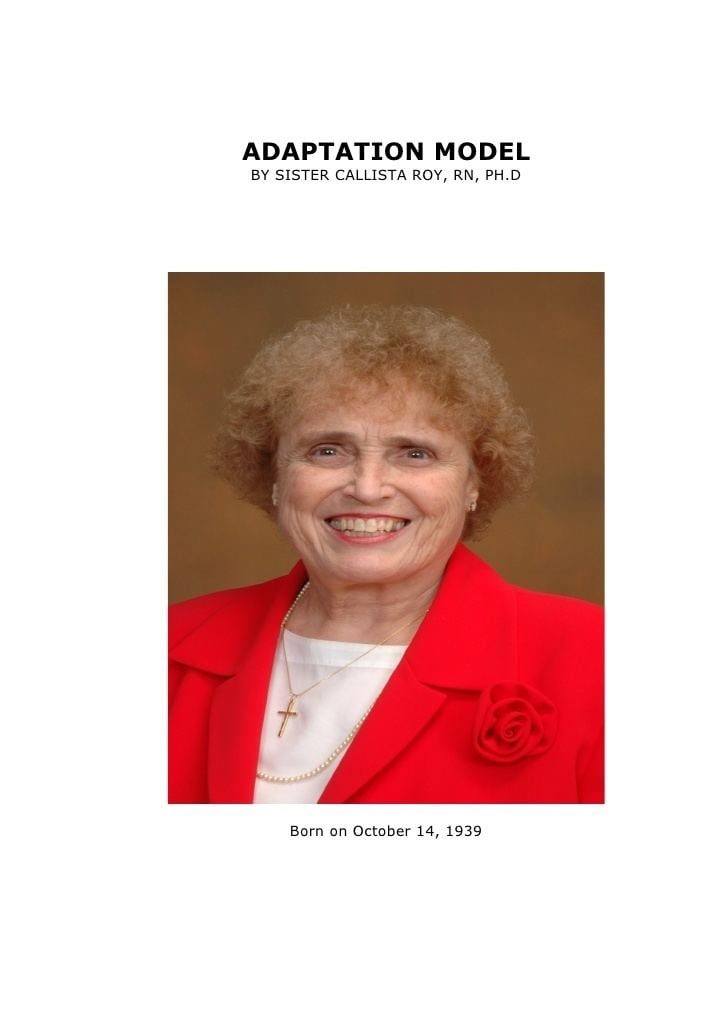Years active 1963–present Role Author | Profession Nursing professor Name Callista Roy Research Nursing theory | |
 | ||
Full Name Callista Lorraine Roy Similar People Martha E Rogers, Jean Watson, Patricia Benner | ||
Dr. Eichelberger’s Interview with Sr. Callista Roy (May 1, 2015)
Sister Callista Roy, CSJ (born October 14, 1939) is an American nursing theorist, professor and author. She is known for creating the Adaptation model of nursing. Roy was designated as a 2007 Living Legend by the American Academy of Nursing.
Contents
- Dr Eichelbergers Interview with Sr Callista Roy May 1 2015
- Nursing theorist callista roy part 2
- Education
- Career
- Roy Adaptation Model
- Honors and awards
- Published works
- References
Nursing theorist callista roy part 2
Education

Roy earned an undergraduate degree in nursing from Mount St. Mary's College in 1963, followed by a masters degree in nursing from University of California, Los Angeles (UCLA) in 1966. She then earned masters and doctoral degrees in sociology from UCLA. She served as a postdoctoral fellow in neuroscience nursing at the University of California, San Francisco. She also been awarded four honorary doctorates.
Career
Roy is Professor and Nursing Theorist at Boston College in the William F. Connell School of Nursing. In 1991, she founded the Boston Based Adaptation Research in Nursing Society (BBARNS), which would later be renamed the Roy Adaptation Association. She has lectured across the United States and in more than thirty other countries. Currently, she is studying the role of lay study partners in recovery from mild head injury.
She belongs to the Sisters of St. Joseph of Carondelet.
Roy Adaptation Model
During her graduate studies, Roy was compelled by instructor Dorothy Johnson to write a conceptual model of nursing. The Roy Adaptation Model was first published in Nursing Outlook in 1970. In this model, humans (as individuals or in groups) are holistic, adaptive systems. The environment consists of internal and external stimuli that surround an individual or group. Health is seen as a sound, unimpaired condition leading to wholeness. Nursing's goal is to promote modes of adaptation that support overall health.
Four modes of adaptation support integrity: physiologic-physical, self-concept group identity, role function and interdependence. In applying Roy's model, the following steps may help to integrate it with the traditional nursing process: assessment of client behavior; assessment of stimuli; nursing diagnosis; goal setting; interventions; and evaluation.
